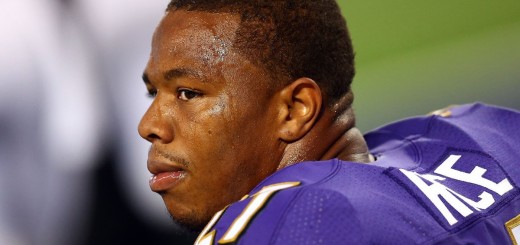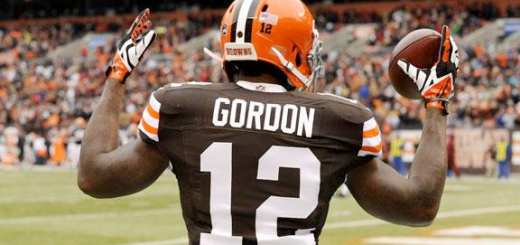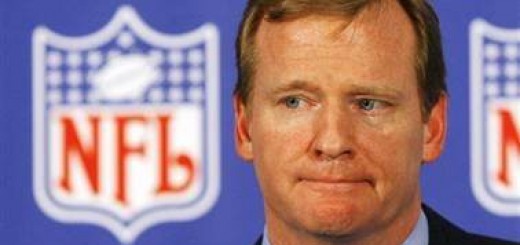Mike Tomlin, the 2010 Lombardi Trophy-hoisting head coach of the Pittsburgh Steelers, uncharacteristically thrust himself into the limelight during a Thanksgiving night game against the rival Baltimore Ravens. Tomlin seemingly attempted to impede kick return extraordinaire Jacoby Jones’ path to the end zone by standing extremely close to the playing field during a return down the sideline. Tomlin made a quick jab-step onto the turf as Jones was moments from putting both Tomlin and the Black and Yellow coverage unit in his wake. Instead of facing the music known as Tomlin’s foot, Jones instinctively veered towards the middle of the field to avoid contact, and was caught from behind well short of the end zone. A video of the incident can be seen here:
While Tomlin was accountable afterward for his sideline location during the play, the league reacted by handing him a $100K fine and expressly reserved the right to burn one of Pittsburgh’s prized draft picks in next May’s 2014 NFL Draft. The league cited Tomlin’s violation of Rule 13, Section 1, Article 4 of the NFL Rule Book for overstepping the boundaries of where players and coaches are allowed to stand on the sidelines during a play. Significant repercussions, for sure… but what remedies would have been at the league’s disposal had Jones been tackled not by Cortez Allen moments after the bizarre incident, but by Tomlin himself?
Had Jones eaten grass at the hand (or foot) of Tomlin, we would have witnessed a situation where the leader of a franchise breached the invaluable, infinitely cherished “laws of sportsmanship,” disgracing the integrity of our beloved NFL on national television in the process. The nature of such a hypothetical assault on sports justice would necessitate a penalty far more severe than the one actually handed down to the embattled coach. But what would be the NFL’s source of authority, and what restraints would exist? Three words, which cause league members’ collective teeth to chatter in fear: Personal Conduct Policy.
Roger Goodell, as Commissioner of the NFL, enjoys broad powers to punish players, coaches and any persons involved in the league pursuant to the NFL’s Personal Conduct Policy . If you lent an ear to a New Orleans Saints supporter, he or she would likely describe said policy as a demonic document requiring those who cash a paycheck courtesy of the NFL or its member teams, to avoid “conduct detrimental to the integrity of and public confidence in the National Football League.” Once the Commissioner has earmarked a particular action as being in violation of the policy, he may swing away freely with an almost infinitely big stick, in the form of fines, suspensions, or even banishment from the league.
One does not have to dive too deeply in the annals of history to find the origin of the Commissioner’s power. In 2006, the league’s owners and the NFLPA were engaged in a labor negotiation to prospectively extend the NFL Collective Bargaining Agreement. The debate centered largely around one issue: revenue, and how it would be shared between the two sides. In his attempt to capture the largest possible slice of financial pie for his players, the late Gene Upshaw, then President of the NFLPA, sought to appease the owners on the issue of curbing players’ embarrassing off-field conduct. The league had recently experienced an influx of talented, yet troubled individuals such as Adam “Pac Man” Jones, Terry “Tank” Johnson and the late Chris Henry. The owners were worried about the league’s image, and Upshaw seized an opportunity to use the granting of broader penal powers as a bargaining chip in exchange for what was perceived by the players as a more favorable return. Flash forward to the CBA negotiations of 2011, and again the players set their sights on the league’s revenue and changes to practice schedules, among other issues, without prioritizing the extent to which they are vulnerable to the mighty gavel held in the National Football League’s tightly clenched fist.
No matter one’s opinion about the current distribution of authority or the appropriateness of the personal conduct policy, it is clear that Roger Goodell would have possessed the firepower to punish Tomlin as he pleased, without any practical constraints outside of those imposed by his internal sense of justice. The only limitation to Goodell’s power is the appeals process described in Article 46 of the NFL CBA. However, Article 46, Section 2(a) grants the Commissioner sole discretion to serve as the hearing officer upon appeal of punishments stemming from on-field incidents or the personal conduct policy. Accordingly, coach Tomlin’s recourse would be to politely ask the Commissioner to reconsider his punishment. Any limitations to the Commissioner’s power to punish our hypothetically ill-behaved Tomlin are therefore merely technical and theoretical in nature.
The league has, however, openly discussed a CBA-imposed inability to hand down additional punishment after a franchise has taken action against a coach or player. In August of 2013, following the unfortunate racial slur incident involving Philadelphia Eagles’ wide receiver Riley Cooper, Goodell spoke about the league’s inability to impose “double jeopardy” on its members when a team’s front office beats Goodell to the punch. It is therefore possible that Steelers’ owner Dan Rooney would take the reins and determine Tomlin’s punishment. But not so fast… Steelers’ ownership, which originated with Dan’s father, Art Rooney, has long been known to operate with the utmost degree of loyalty and respect for its coaches. Look no further than the fact that only three men have had the honor of calling themselves the Head Coach of the Pittsburgh Steelers since 1969, and the culture of extreme support of its coaches is quite clear. My gut feeling is that Rooney’s support for Tomlin would show itself in the form of silence, as the Steelers would be unwilling to reveal any self-imposed chinks in the “Black & Yellow” chain.
A coach turning himself into an unexpected aggressor by making purposeful, physical contact with an opposing player would be an unfathomable act that the league would punish to the fullest extent. The nature of such an act, especially when the issue of player safety is so frequently heard off the tongues of the players, media pundits and judicial figures, would draw a fine, suspension and loss of draft picks that would even make Sean Payton, Gregg Williams and Tom Benson cringe. And for that, Tomlin and the Pittsburgh Steelers organization should be grateful that Jacoby Jones made that subtle inside cut.



Very interesting point about Gene Upshaw and how the Personal Conduct Policy came about.
Also worth noting is that a Jets strength coach tripped a Miami player running along the out of bounds line and was suspended by the Jets organization for the rest of the season.
Appreciate the comment, thanks Russell.
It’s funny you mention the Sal Alosi (Jets strength coach) incident. My original draft of this article included a paragraph on that. I wasn’t sure how strong of an indicator that gave us when applied to the Tomlin situation because a) Alosi wasn’t in a restricted area (not on the field), b) he didn’t contact a ball carrier and c) since the Jets suspended him, it never got to Goodell.
Interesting though, and definitely relevant. As crazy as it seems, I guess coaches are hyper-competitive by nature and can get caught up in the moment.